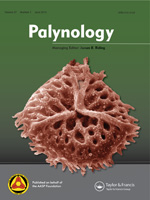The ancient tell (mound) of Ramat Rahel sits on the outskirts of Jerusalem. It features an impressive residency and palatial garden that flourished during the seventh to fourth centuries BCE, when biblical Judah was under the hegemony of the Assyrian, Babylonian and Persian empires. Until recently, the garden's flora has been a mystery, as standard archaeological procedures were unable to retrieve secure archaeobotanical remains. A unique method of extracting fossil pollen from ancient plaster has now enabled researchers to reconstruct the exact vegetation components of this royal Persian garden and for the first time to shed light on the cultural world of the inhabitants of the residence. The plaster layers and garden are dated archaeologically and by Optically Stimulated Luminescence (OSL) methods to the Persian period (fifth to fourth centuries BCE), and produced evidence of importation by the ruling Persian authorities of special and highly valued trees to the garden from remote parts of the empire. The most surprising find, and marking its earliest appearance in the southern Levant, was the citron (Citrus medico), which later acquired a symbolic-religious role in Judaism. Other imported trees found to have been grown in the garden are the cedar, birch and Persian walnut. The pollen evidence of these exotic trees in the Ramat Rahel palatial garden suggests that they were probably brought to flaunt the power of the imperial Persian administration. Native fruit trees and ornamentals that were also grown there include the fig, grape, olive, willow, poplar, myrtle and water lily. The identification of the ancient garden's plant life opens a course for future research into the symbolic role of flora in palatial gardens. It also offers new opportunities for studying the mechanism by which native flora was adopted in a particular geographical area and proliferated by humans across the world.
How to translate text using browser tools
1 June 2013
Fossil Pollen Reveals the Secrets of the Royal Persian Garden at Ramat Rahel, Jerusalem
Dafna Langgut,
Yuval Gadot,
Naomi Poratb,
Oded Lipschits
ACCESS THE FULL ARTICLE
It is not available for individual sale.
This article is only available to subscribers.
It is not available for individual sale.
It is not available for individual sale.

Palynology
Vol. 37 • No. 1
June 2013
Vol. 37 • No. 1
June 2013
ancient gardens
citron
exotic trees
Israel
Persian Period
pollen
Ramat Rahel




